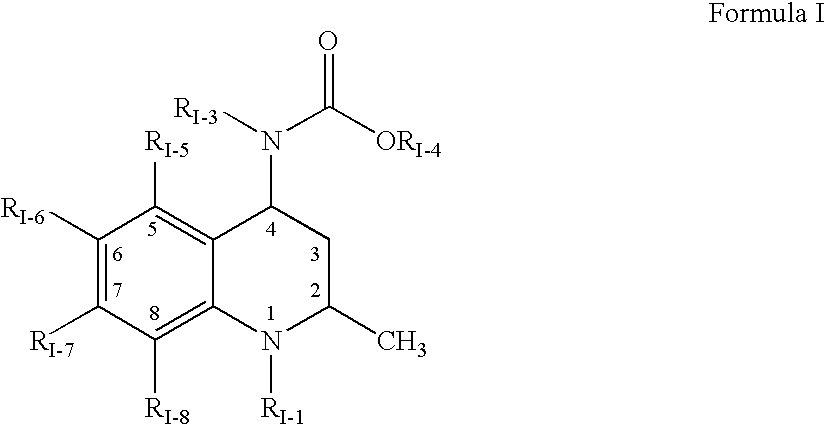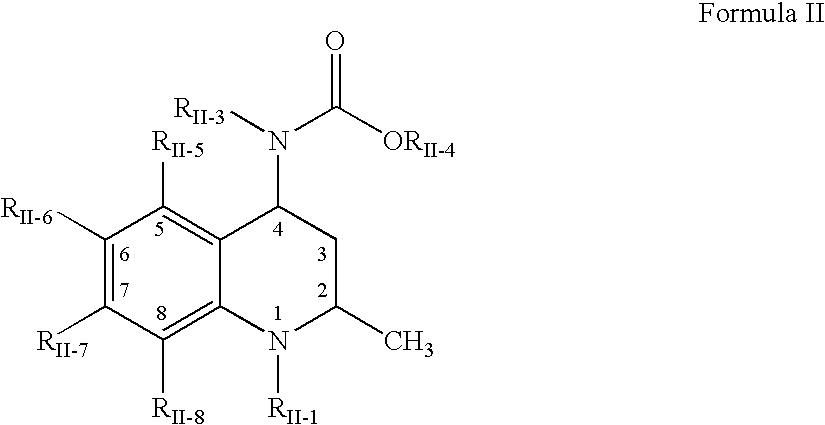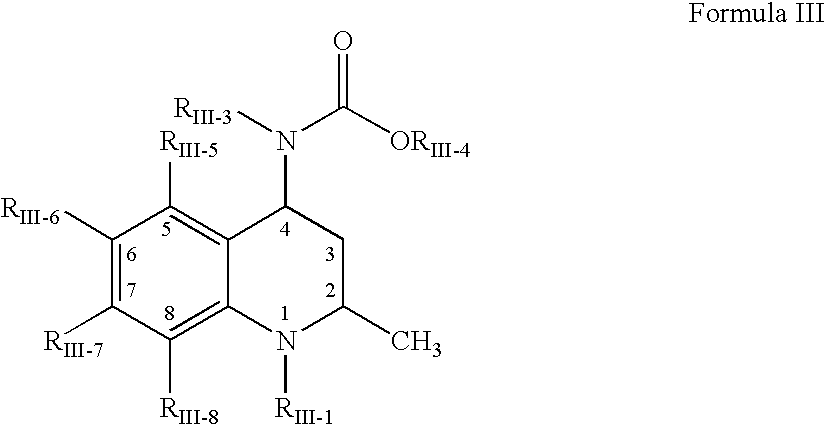Pharmaceutical Compositions of Cholesteryl Ester Transfer Protein Inhibitor
a technology of cholesteryl ester and cholesterol, which is applied in the field of pharmaceutical compositions of cholesteryl ester transfer protein inhibitors, can solve the problems of insufficient hdl-elevating therapies, difficult formulation, and inability to achieve wholly satisfactory hdl-elevating therapies, etc., to achieve adequate efficacy, improve the aqueous concentration of cetp inhibitors, and improve the effect of solubility
- Summary
- Abstract
- Description
- Claims
- Application Information
AI Technical Summary
Benefits of technology
Problems solved by technology
Method used
Image
Examples
example 1
[0625] This example discloses preparation of an amorphous solid dispersion of [2R,4R] 4-[(3,5-bis-trifluoromethyl-benzyl)-methoxycarbonyl-amino]-2-cyclopropyl-6-trifluoromethyl-3,4-dihydro-2H-quinoline-1-carboxylic acid isopropyl ester (“Drug 1”), which has a solubility in water of less than 1 μg / mL and a Clog P value of 7.6. A dispersion of 10 wt % Drug 1 and 90 wt % polymer was made by mixing Drug 1 in the solvent acetone together with a “medium fine” (AQUOT-MF) grade of the cellulosic ester polymer HPMCAS (manufactured by Shin Etsu) to form a solution. The solution comprised 0.053 wt % Drug 1, 0.477 wt % HPMCAS, and 99.47 wt % acetone. The dispersion was prepared using a “mini” spray-dryer, which consisted of an atomizer in the top cap of a vertically oriented stainless steel pipe. The atomizer was a two-fluid nozzle (Spraying Systems Co. 1650 fluid cap and 64 air cap), where the atomizing gas was nitrogen delivered to the nozzle at 10° C. and a flow rate of 15 μm / min, and the so...
examples 2-3
[0627] Spray-dried dispersions were prepared using the procedure described in Example 1 except that the concentration-enhancing polymer was varied as noted in Table 1.
example 4
[0628] A spray-dried dispersion was prepared using the procedure described in Example 1 except that the ratio of Drug 1 to HPMCAS-MF was 1:1 (50 wt % Drug 1), as shown in Table 1.
TABLE 1Drug 1Aqueous-PolymerSolventSprayExam-MassSolubleMassMassAppa-ple(mg)Polymer*(mg)Solvent(g)ratus19HPMCAS-81acetone17miniMF23.8HPMCP33.7acetone6mini33.5PVP31.5Acetone / 6miniMeOH0.12425HPMCAS-25acetone12miniMF
*Polymer designations: HPMCAS = hydroxypropyl methyl cellulose acetate succinate; HPMCP = hydroxypropyl methyl cellulose phthalate; PVP = polyvinylpyrrolidone.
PUM
| Property | Measurement | Unit |
|---|---|---|
| solubility | aaaaa | aaaaa |
| melting point | aaaaa | aaaaa |
| solubility | aaaaa | aaaaa |
Abstract
Description
Claims
Application Information
 Login to View More
Login to View More - R&D
- Intellectual Property
- Life Sciences
- Materials
- Tech Scout
- Unparalleled Data Quality
- Higher Quality Content
- 60% Fewer Hallucinations
Browse by: Latest US Patents, China's latest patents, Technical Efficacy Thesaurus, Application Domain, Technology Topic, Popular Technical Reports.
© 2025 PatSnap. All rights reserved.Legal|Privacy policy|Modern Slavery Act Transparency Statement|Sitemap|About US| Contact US: help@patsnap.com



